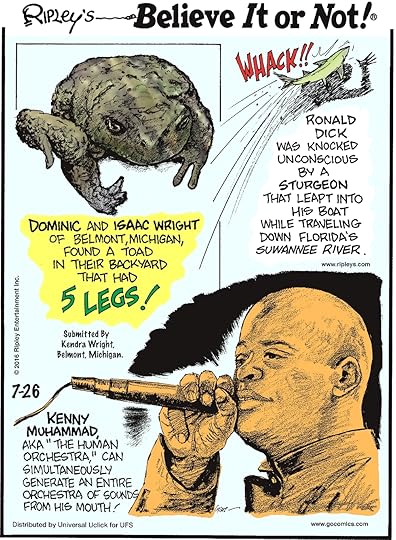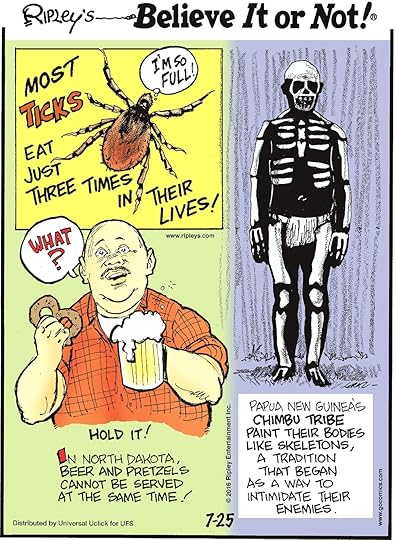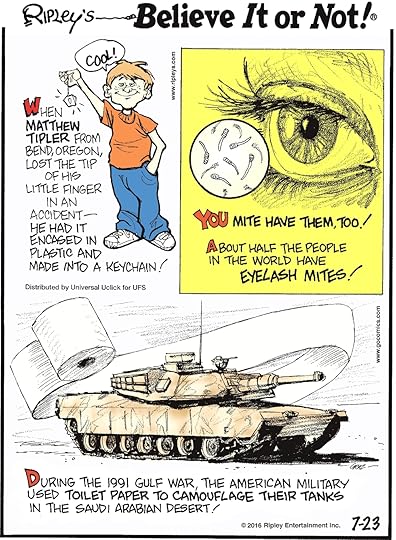Ripley Entertainment Inc.'s Blog, page 468
July 26, 2016
And the Winner of the #RipleysGo Contest is…
Featured in Ripley's Believe It or Not!

In the week after the app first launched in the U.S., we started a contest to see who could spot the rarest Pokemon at one of our locations around the world.
Submissions rolled in from all over the globe. People traveling on vacation and locals in the area rushed to submit their Pokémon finds through Twitter and Instagram using the hashtag #RipleysGo.
Instagram #RipleysGo
After ten days, we can officially announce that we have a winner!
The Winner Is…
The Grand Prize winner is Alisha Perry, who caught a Tauros in the Hollywood BION!
A photo posted by @alishaperry on Jul 17, 2016 at 6:11pm PDT
Congrats Alisha!
More to Come
With the overwhelming number of submissions, tweets, and messages about the contest, you can be sure we’ll be looking to do more contests like this in the future.
Our newest book, Unlock the Weird, is launching in September, so stay tuned for even more contests to celebrate its release.
In the meantime, here are a few honorable mentions of great submissions from #RipleysGO.
Honorable Mentions
These Doll Sculptures Blur the Line Between Cool and Creepy
Featured in Ripley's Believe It or Not!
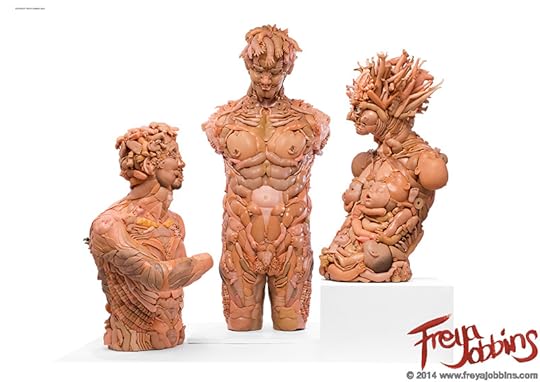
Freya Jobbins is an artist close to Ripley’s heart. She was featured in our book in 2013. Her art is totally unique, and her doll sculptures are a style all her own.
Based in Sydney, Australia, Freya did not get her start as a visual artist. Instead, she tried her hand at police work.
After seeing that that wasn’t for her, she decided to go back to school. With a degree in printmaking and sculpture, Freya was ready to embark on her new life.
She couldn’t have guessed that her original aesthetic would take the world by storm. She takes upcycled and second-hand dolls and uses their body parts to create something new.
Each limb is precisely placed to create a particular effect. In this way, fingers and toes can stand in for hair, or a Ken doll’s chest can double as a cleft chin.
The irony of my plastic works is that I take a material that was created to be touched, and I make it [as] untouchable as an artwork.
Looking at the doll sculptures can be somewhat unsettling, but they’re still captivating. There’s something about the way the limbs seem to grasp portions of the face that suggest each finger is holding the entire thing together. Her artwork might blur the line between creepy and cool, but here at Ripley’s, we think it’s all awesome!
You can find more about Freya Jobbins on her website, Facebook, and Instagram pages.
The Doll Sculptures

By Freya Jobbins

By Freya Jobbins
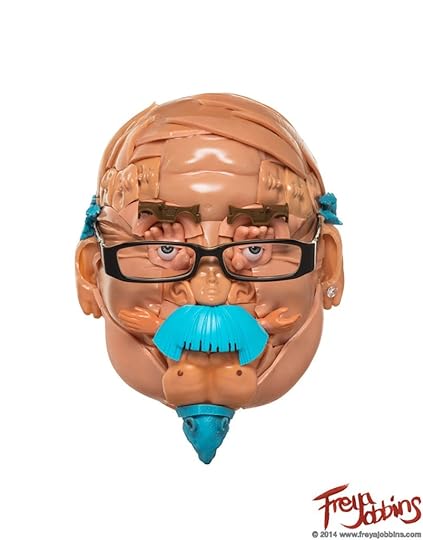
By Freya Jobbins

By Freya Jobbins
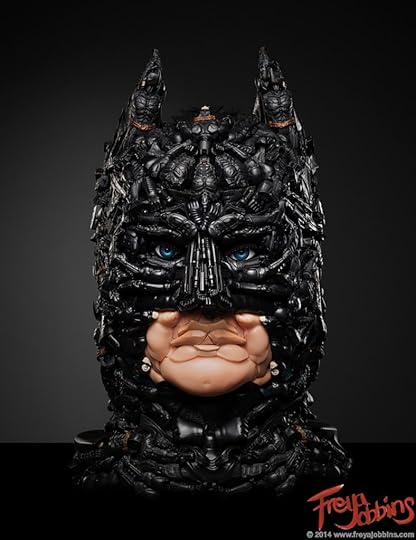
By Freya Jobbins
Source: These Doll Sculptures Blur the Line Between Cool and Creepy
The Not-So Dangerous Lives of Mine-Sniffing Rats
Featured in Ripley's Believe It or Not!
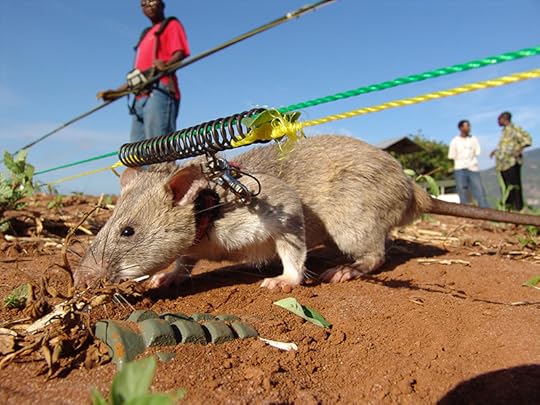
Imagine you live in a war-torn region. There are bombs and landmines littering the countryside, and anywhere you go carries the possibility of being blown to bits. How do you go about fixing this problem? With mine-sniffing rats of course.
A Belgian nonprofit company called Apopo has been training rats to recognize the smell of TNT. They don’t use your standard variety rat either. The African giant pouched rat grows up to three feet long. They have poor eyesight and an excellent sense of smell and hearing. These attributes make them perfect for the job of sniffing out buried explosives.
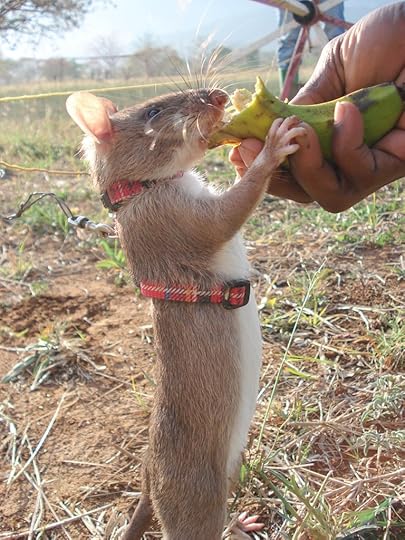
He’s so cute in his little harness.
Hot To Train a Mine Detecting Rat
From the moment they open their eyes, the rats are socialized to get used to humans and the stimuli of the world.
After that, they are conditioned through click training similar to that used to train dogs. They learn that a click means they get food, and they are given food when they correctly identify the smell of TNT. They are trained to differentiate between smells and zero in on the scent of TNT, and when they do it correctly, the trainer clicks the clicker and gives them food.

How it’s Working
As you might imagine, sending an army of rats into a country to tackle their landmine problem is a dubious situation at best. Most people don’t really like rats.
But they’re cost-efficient, they’re easy to transport, they’re easy to train, and they don’t set off the mines because they’re too light. – Operations Coordinator Theap Bunthourn
In spite of the general dislike towards rodents, the people of Cambodia are having to accept their help in dealing with this problem. Dozens of people are killed each year due to landmines and other pieces of unexploded ordnance. In addition to the deaths, the country is taking a substantial financial hit. Because the explosives are all over the place, the amount of land available to farmers decreases.
Not only are the mine-sniffing rats incapable of setting off the bombs, but they also work faster and more efficiently than deminers.
You see this 200 square meters? They clear in only 30 minutes or 35 minutes. If you compare that to a deminer, maybe two days or three days. – Cambodian supervisor Hulsok Heng
The rats are better because they single in on just the landmines. A mechanical deminer works more like a metal detector. That means that all of the metal in the area will be detected by it. And every time the machine beeps, the inspector has to investigate. The rats, however, will ignore random bits of scrap metal, so each time they react, the trainer knows it’s a real landmine.
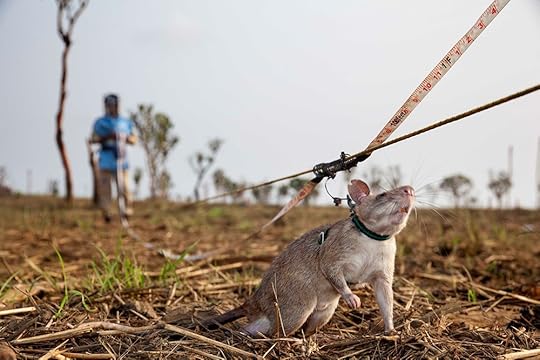
By APOPO via Wikimedia
Sergeant Stubby, the Decorated War Dog
Featured in Ripley's Believe It or Not!
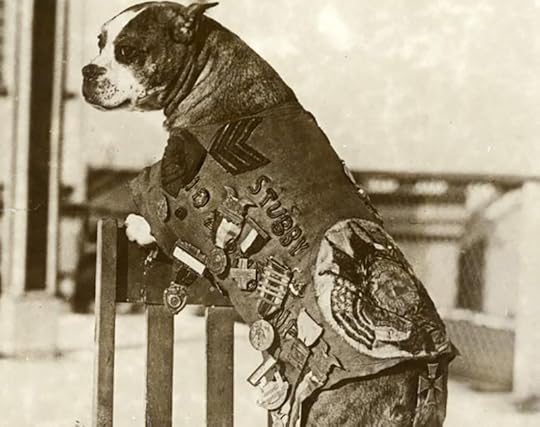
“Stubby,” a pit bull mix with the U.S. 102nd Infantry Regiment during WWI, was made a Sergeant after attacking a German Spy.
Stubby severed in the trenches in France for 18 months
He participated in four offensives and 17 battles
He was an expert at warning his fellow soldiers of gas attacks
He could hear the whistle of incoming artillery shells before humans and was able to alert soldiers when to duck and cover
He was solely responsible for the capture of a German spy in Argonne
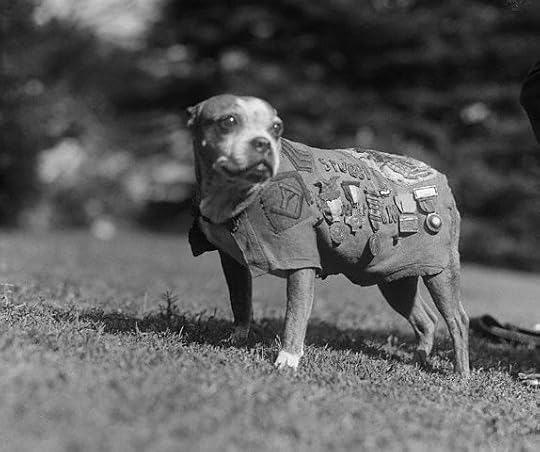
MINI BION
“BIONs” – short for Believe It or Not – is the word we use at Ripley’s to refer to anything that is unbelievable and worthy to become part of Ripley’s lore and collection.
CARTOON 07-26-2016
July 25, 2016
Yulia Brodskaya Takes Quilling to a New Level
Featured in Ripley's Believe It or Not!

Quilling is an art form that started during the Renaissance. Nuns and monks needed a way to decorate book covers and religious items, so they turned to a substance they had in abundance: paper.
The unique art form takes strips of paper and bends, twists, crimps, and curls them into different shapes. Then, those strips of paper are glued onto a surface to create a 3D, textured design.

By KDM silva via Wikimedia
Today, quilling is most often seen on greeting cards and formal invitations. But that’s not to say that this is the only use for the traditional practice. Russian-born artist Yulia Brodskaya is taking it to a whole new level and elevating simple techniques of glue and paper into high art.
Yulia Brodskaya
Born in 1983, Yulia got her start as a graphic designer. But she soon saw that flat world of computer graphics wasn’t to her liking. In an effort to get back to basics, she began working with paper again and discovered a new love.
Paper always held a special fascination for me. I’ve tried many different methods and techniques of working with it until I found the way that has turned out to be ‘the one’ for me: now I draw with paper instead of on it.
Yulia starts with a detailed sketch of the finished product. This gives her a roadmap of where each individual strip of paper will go. She then folds and bends the paper how she needs it, and starts the process of gluing each one into place. It can take anywhere from a couple hours to weeks or more to create one completed piece. It all depends on how detailed the finish work has to be.
But whereas traditional quilling techniques relied on basic shapes, Yulia is manipulating the paper into more intricate designs in favor of creating even more vibrant and detailed works.
You can see more of Yulia’s artwork on her Facebook page.
The Art

Heart
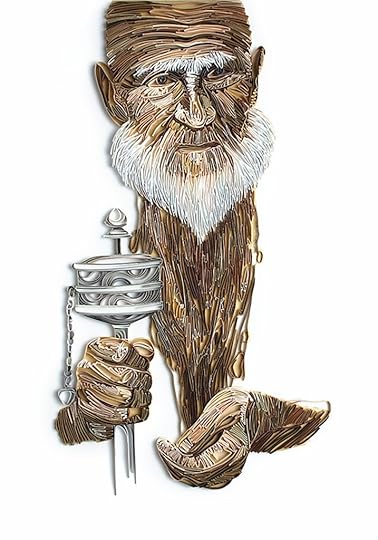
King of Spades

Party Lion

Shine
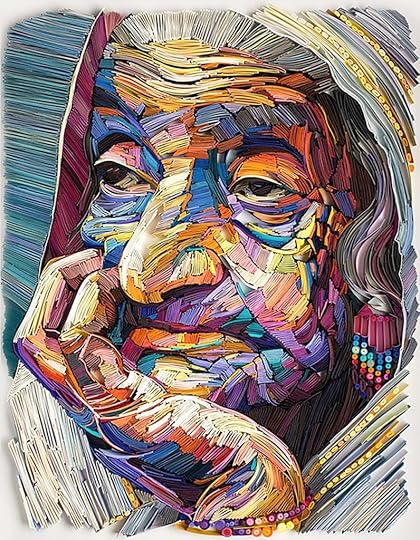
Topaz
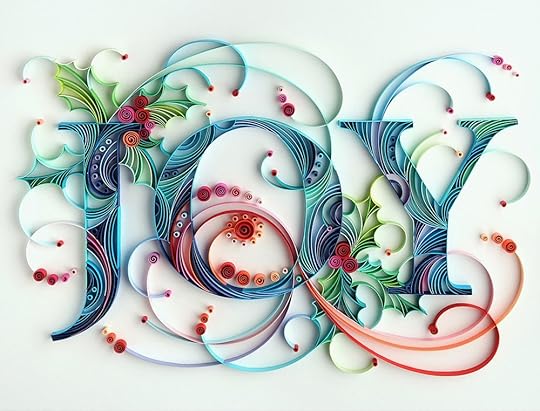
Joy
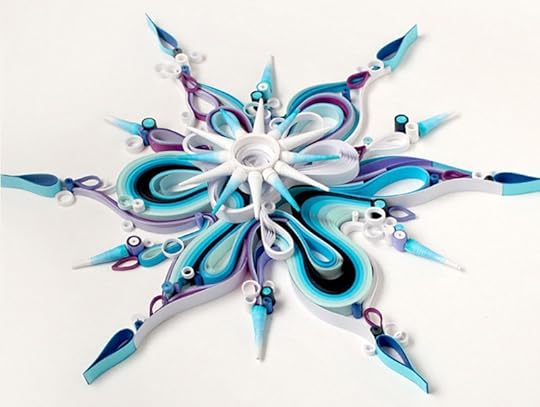
3D Snowflake

Light Flower
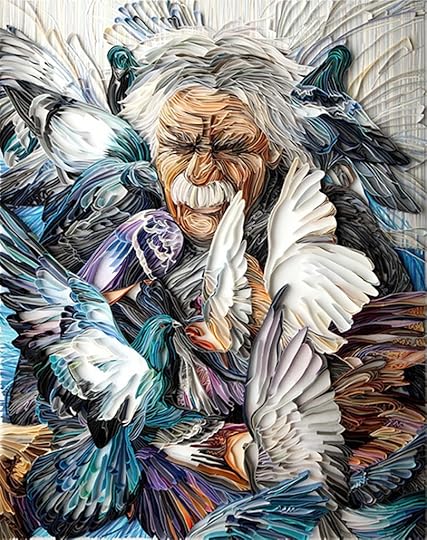
LovesDoves
CARTOON 07-25-2016
July 24, 2016
CARTOON 07-24-2016
July 23, 2016
CARTOON 07-23-2016
July 22, 2016
Unboxing and Unmasking Thai Theater
Featured in Ripley's Believe It or Not!

In This Episode
Last week’s episode was monolithic and even hinted at an alien race. Today, we are coming back down to earth and entering into the Ripley archives!
Today: Thai Theater Masks
Share & Subscribe
If you liked the show, please share it with your peeps. Remember to SUBSCRIBE to our channel to stay BION-informed!


Robert Ripley, Thailand 1932
Robert Ripley’s passion was travel, and by 1940, he had visited over 200 countries! On one of his relentless quests for odd people, places, and things, in 1932, he became enamored with Thai theater and he purchased the masks in today’s unboxing.
This trip to Thailand was very well documented. In his journal, Ripley wrote that he “watched the fighting Siamese fish, and then the Siamese dancers.”
On Kohn theater, Ripley wrote, “the dancers of Siam, and all the other places in this part of the world, look marvelous…their costumes were the most magnificent I have ever seen.”
KHON THEATER
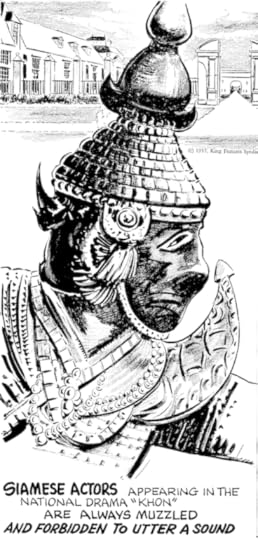
Believe it or not, in its heyday, Khon actors were muzzled when performing in order to not even utter a sound!
Khon is a genre of dance drama that was traditionally performed solely by masked men in the royal court. The performance was founded in the Ayutthaya era (1350 – 1767) in Thai history and presents a story that explains virtue always wins over evil.
In performance, actors dance and pantomime along with the chanted narrative of a storyteller, chorus and orchestra. As Ripley noted in his journal, the costumes are very elaborate, including decorated headdresses and full-head masks, which is the most distinctive characteristic of this performance.
CHARACTERS
There are four types of characters or masks: males, females, demons, and monkeys
Because of these limited characters, each masks is given a unique characteristic in order for the audience to be able to distinguish which character is which.
For example, the white monkey with an open mouth and trident is Hanuman. But another white monkey with a closed mouth and dagger is Sataplee. Other monkey characters might be distinguished by the kind of headdress they’re wearing.
This may seem confusing, but characters with similar masks and costumes never really appear on stage at the same time. Plus, the details that differentiate each character is what makes these masks so unique.
Ripley Entertainment Inc.'s Blog
- Ripley Entertainment Inc.'s profile
- 52 followers


